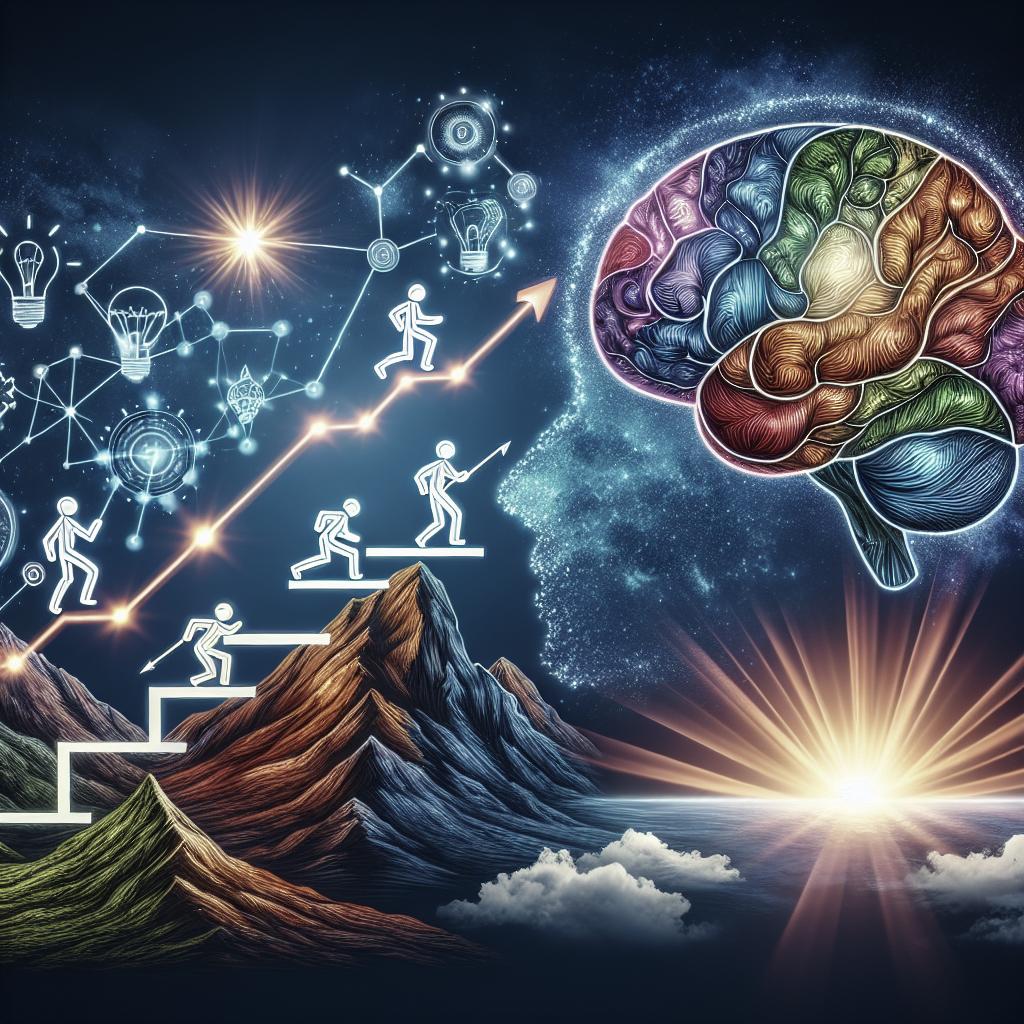Reflecting on one’s learning is a powerful mechanism to build a growth mindset, a concept brought to life through the groundbreaking work of Dr. Carol Dweck. A growth mindset emphasizes the belief that abilities and intelligence can be developed through effort, learning, and persistence. This blog post delves into the significance of a growth mindset in education, highlighting strategies for teachers to nurture this mindset among students. From the science behind Dr. Dweck’s theories to practical classroom implementations like gamification and goal-based journaling, this comprehensive guide is designed to equip educators with actionable insights. Additionally, a detailed infographic and a summary table will aid in visualizing key tactics discussed, thereby making it easier to integrate these methods into teaching practices. —
About Dr. Carol Dweck and Growth Mindset in Education for Students
Dr. Carol Dweck, a renowned psychologist and Stanford University professor, has revolutionized our understanding of intelligence and learning with her concept of the growth mindset. According to her research, individuals who believe their intelligence and abilities can grow through hard work and dedication tend to achieve more than those with a fixed mindset—who view their talents as innate and unchangeable. This pivotal idea has profound implications for education, encouraging an environment where students are more resilient and open to challenges. In educational contexts, fostering a growth mindset can change how students approach learning, manage stress, and solve problems. By believing that they can improve, students become more motivated to put in effort, welcome feedback, and engage in lifelong learning. These attitudes are critical for success not just in school, but in personal and professional arenas as well.
10 Ways Teachers Can Foster a Growth Mindset in Students
1. Avoid Praising Intelligence and Sheer Effort
When students are praised solely for being “smart” or for the effort they’ve put in, it sends a misleading message. Instead of focusing on intelligence, praise the process—strategies used, focus, perseverance, and improvement. This helps students understand that their success is tied to their approach, not an inherent trait. For instance, instead of saying, “You’re so smart,” say, “I can see you worked really hard on this project and it paid off.” This subtle shift fosters a mindset where students associate their achievements with their actions and decisions, reinforcing their belief in their capacity for growth.
2. Use Diverse Teaching Strategies
Employing various teaching methods allows students to engage with the material in different ways, catering to diverse learning styles. Some students may grasp concepts better through visual aids; others might need hands-on activities or discussions. By diversifying your teaching strategies, you communicate that there are multiple ways to understand and solve a problem, reinforcing the idea that abilities can be cultivated through the exploration of different approaches. This also helps students see the value in persistence and experimentation.
3. Introduce Simple Gamification Elements
Gamification can make learning engaging and dynamic by incorporating elements of game design into the educational process. Implementing leaderboards, rewards, and varied levels of difficulty can motivate students to persevere in their tasks, much like they would in a video game. This approach taps into intrinsic motivation and encourages a growth mindset by making challenges enjoyable and success attainable through incremental progress. It helps underscore the importance of practice and steady improvement.
4. Teach the Values of Challenges
Challenges should be framed as opportunities for growth rather than obstacles to success. This involves shifting the narrative in the classroom from avoiding failure to embracing it as a natural part of the learning process. Encourage students to tackle difficult subjects and reassure them that struggling is not a sign of inadequacy but a step toward mastery. By demonstrating through your actions and words that challenges are valuable, you instill in students the courage to take intellectual risks.
5. Encourage Students to Expand Their Answers
Rather than accepting short or surface-level answers, prompt students to elaborate and delve deeper into their reasoning. This practice helps students develop critical thinking skills and promotes a more thorough understanding of the material. You might ask follow-up questions like, “Can you explain why you think that’s the case?” or “What evidence supports your answer?” This strategy encourages deeper reflection and illustrates that their ideas can always be refined and improved.
6. Explain the Purposes of Abstract Skills and Concepts
Students are more motivated to learn when they understand the practical applications of abstract skills. Explain how the concepts they are studying apply to real-life situations or future career paths. When students see the value in what they’re learning and can connect it to their interests and goals, they are more likely to engage deeply with the material and persist through difficult aspects. This helps to foster a growth mindset by providing context and relevance.
7. Allow Time for Goal-Based Journaling
Encouraging students to keep a journal where they set specific academic and personal goals can help them take ownership of their learning journey. Journaling allows them to track their progress over time, reflect on their failures and successes, and strategize for future endeavors. This practice not only promotes self-regulation but also helps students internalize the idea that growth is a gradual and ongoing process. It can be particularly impactful in developing perseverance and intrinsic motivation.
8. Say “Yet” More Often
Incorporating the word “yet” into your vocabulary can make a simple yet powerful difference in how students perceive their abilities. Statements like “I can’t do this” become “I can’t do this yet,” subtly but significantly changing the focus from present limitations to future potential. This linguistic shift helps students understand that their abilities are not fixed and that continued effort will bring improvement. It reinforces the idea that struggles are temporary and solvable.
9. Help Students Change Their Language
The language students use about themselves can shape their mindset. Encourage them to replace negative self-talk with growth-oriented phrases. Instead of saying “I’m not good at math,” they might say, “I’m learning how to improve in math.” This simple change in language fosters a more positive and productive attitude towards challenges. It helps students see themselves as capable learners who can overcome obstacles through effort and persistence.
10. Use Success Folders
A success folder is a personal collection of a student’s work that showcases their growth and achievements over time. This tangible evidence of progress can be incredibly motivating, offering a clear visual representation of how much they have improved. Having students periodically review their success folders can reinforce their belief in their capacity for growth. It can also serve as a powerful reminder during moments of self-doubt or frustration, showing them that they are capable of overcoming difficulties and achieving their goals.
Growth Mindset Infographic
Creating a visual representation of the growth mindset can be an effective tool for both teachers and students. An infographic can illustrate the key principles of growth mindset, including its benefits and actionable steps to cultivate it. For example, the infographic could highlight what fixed and growth mindsets look like, how to transition from one to the other, and practical tips for daily practice. By making these concepts easily accessible and visually appealing, an infographic serves as a quick reference that reinforces learning.
Future Prospects About Growth Mindset in Education
As we continue to explore ways to implement growth mindset philosophies in the classroom, the potential benefits are substantial and wide-ranging. With appropriate strategies, educators can create an environment that not only improves academic performance but also fosters resilience, creativity, and lifelong learning. Reflective practices are at the heart of this transformation, providing students with the tools they need to understand and celebrate their learning journeys. The future of education looks promising as we prioritize growth, adaptability, and the continual pursuit of knowledge. “`html
| Strategy | Description |
|---|---|
| Avoid Praising Intelligence and Sheer Effort | Focus on the process and strategies rather than inherent intelligence. |
| Use Diverse Teaching Strategies | Cater to different learning styles through varied methods. |
| Introduce Simple Gamification Elements | Use game design elements to motivate and engage students. |
| Teach the Values of Challenges | Present challenges as opportunities for growth. |
| Encourage Students to Expand Their Answers | Prompt deeper reasoning and critical thinking. |
| Explain the Purposes of Abstract Skills and Concepts | Connect learning material to real-life applications. |
| Allow Time for Goal-Based Journaling | Encourage self-reflection and goal setting through journaling. |
| Say “Yet” More Often | Shift focus from current limitations to future potential. |
| Help Students Change Their Language | Encourage positive, growth-oriented self-talk. |
| Use Success Folders | Maintain a tangible record of student progress and achievements. |
“`


